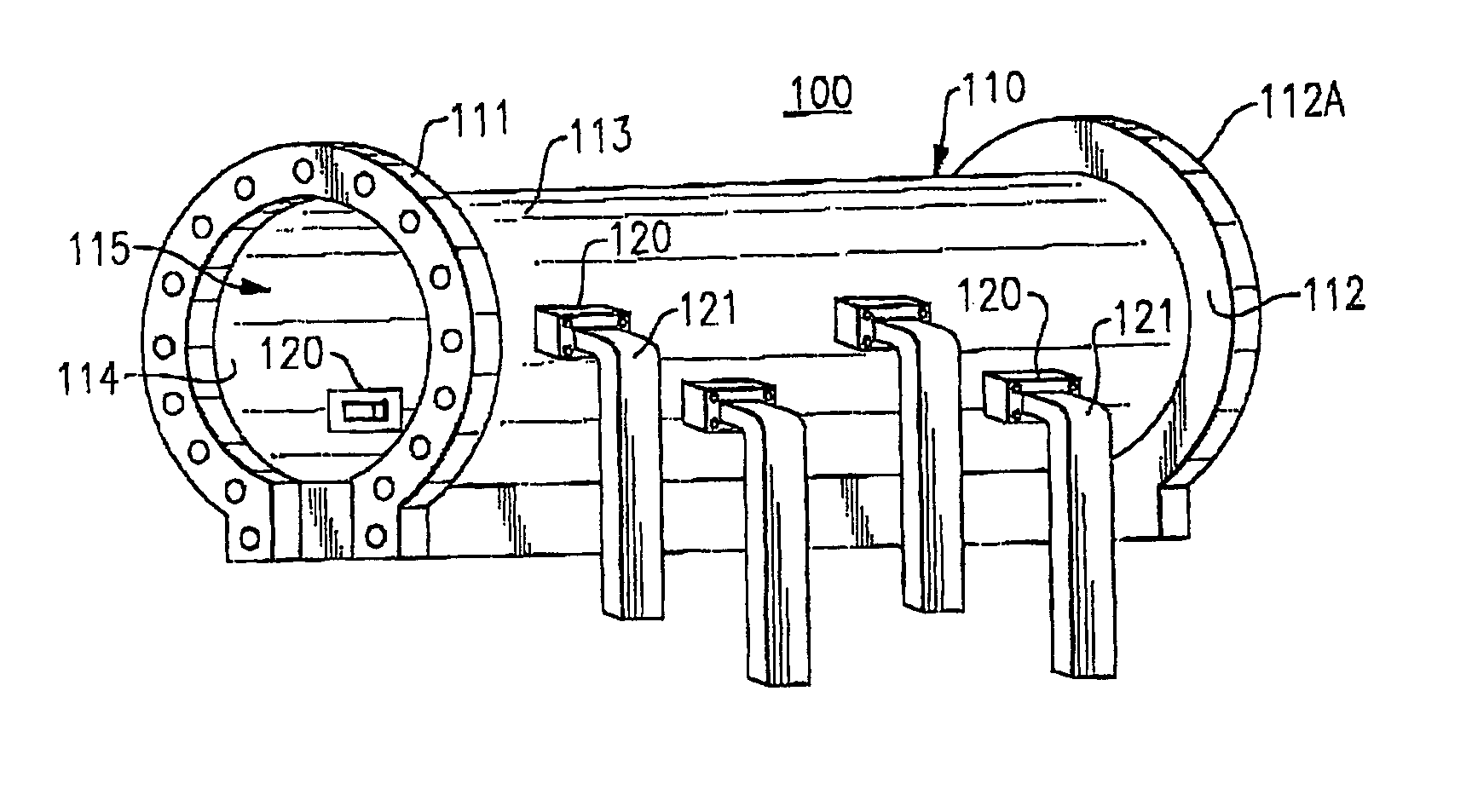Susceptor for hybrid microwave sintering system, hybrid microwave sintering system including same and method for sintering ceramic members using the hybrid microwave sintering system
- Summary
- Abstract
- Description
- Claims
- Application Information
AI Technical Summary
Benefits of technology
Problems solved by technology
Method used
Image
Examples
Embodiment Construction
[0042]FIG. 1 is a perspective end view of an applicator 110 for a microwave hybrid heating system 100 according to one embodiment of the present invention. The applicator 110 is preferably made from a material that is reflective to microwaves and has a substantially cylindrical configuration with a flattened portion for stability and support. The applicator 110 extends in a longitudinal direction from a first end 111 to an opposed second end 112 and has an outer surface 113 and an inner surface 114 to define an elongate microwave chamber 115. The flattened portion provides a stable setting surface for loads (materials) that are processed within the microwave chamber 115 of the applicator 110, and also allows for the conveyance of materials by a belt or other appropriate transport means along the longitudinal distance between the first end 111 and the second end 112. The first end of the microwave chamber 115 is further defined by the inner surface 111A of a first flanged end cover 1...
PUM
 Login to View More
Login to View More Abstract
Description
Claims
Application Information
 Login to View More
Login to View More - R&D
- Intellectual Property
- Life Sciences
- Materials
- Tech Scout
- Unparalleled Data Quality
- Higher Quality Content
- 60% Fewer Hallucinations
Browse by: Latest US Patents, China's latest patents, Technical Efficacy Thesaurus, Application Domain, Technology Topic, Popular Technical Reports.
© 2025 PatSnap. All rights reserved.Legal|Privacy policy|Modern Slavery Act Transparency Statement|Sitemap|About US| Contact US: help@patsnap.com



